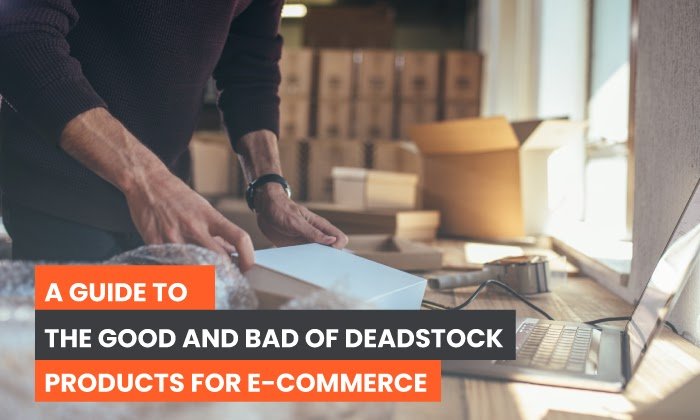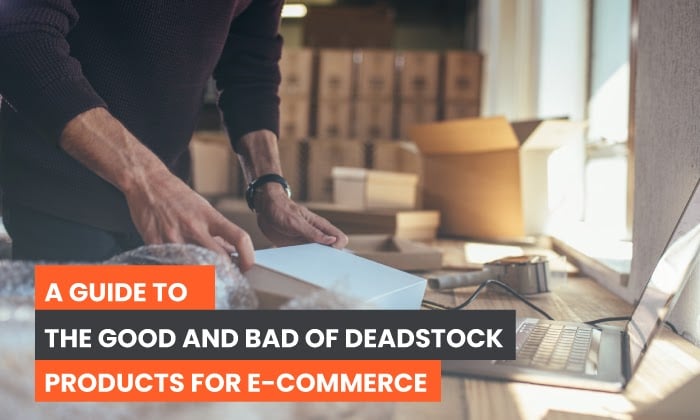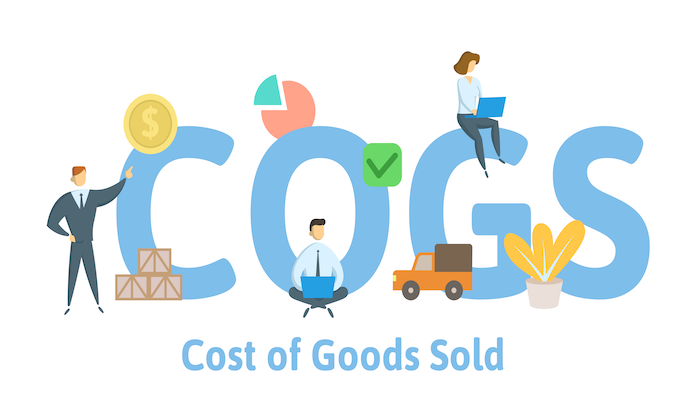The Good and Bad of Deadstock Products for E-commerce

By Neil Patel
E-commerce retailers face many obstacles in the realm of online business.
A common yet persistent issue is deadstock products.
The accumulation of deadstock inventory can drive up operational and warehouse costs. As more products enter the warehouse, the cost of storing unsold items can drain the valuable financial resources of your business.
What’s more, seasonal trends and products make it difficult to eliminate deadstock products completely.
How to solve this problem? This article explains how to avoid deadstock and how to get rid of it when it piles up in your warehouse.
Let’s start with the definition for deadstock first.
What Does Deadstock Mean?
Deadstock is synonymous with dead inventory.
These are items that haven’t been sold and are very unlikely to sell. If you don’t use an inventory management system, these goods likely pile up and remain forgotten in your warehouse.
An alternative definition of “deadstock” refers to goods that are no longer sold in stores. In this case, these deadstock goods, like unused or unworn shoes or vintage apparel, are sold at much higher rates.
For the purposes of this article, we won’t explore the latter definition in this post.
Is Deadstock Bad for Business?
Deadstock comes with a price.
Retailers won’t be able to recoup the cost of manufacturing products if they never sell.
As a result, unwanted items take up space in your warehouse. A longer stay means more storage costs for your business.
How to calculate deadstock? To understand its consequences for your business, calculate the costs involved in holding onto these useless products.
List rental costs, utilities, equipment, insurance, and security used to guard your items.
Ideally, businesses make up for these costs through sales, but deadstock products remain stagnant in your warehouse. Instead of making a profit, retailers pay to keep these useless goods.
Deadstock also has an attached opportunity cost.
The space occupied by these items could have been used for “headstock” or highly profitable and bestselling items, which instantly make a profit for your business.
How to Avoid Deadstock
In my experience, you need to avoid deadstock as much as possible.
Business of Fashion reports that dead inventory costs around $50 billion per year for the US retail industry.
If a retail brand’s standard margin is around 60%, then a deadstock worth $40,000 represents around $100,000 worth of retail sales and $60,000 of gross margin dollars.
I’ve advised a lot of e-commerce stores, and I can tell you it’s best to avoid deadstock than to wait for it to snowball at a later time.
So today, I’ll share tips for avoiding deadstock.
1. Improve Inventory Management For Less Deadstock
Inventory management is a major cause of deadstock.
Fortunately, an inventory management system can guarantee your inventory is monitored and managed appropriately.
Here are some popular inventory management systems:
- inFlow Inventory: an inventory management system that can manage up to 100 products.
- Sortly Pro: a cloud-based inventory management system that can handle up to 100 transaction entries per month.
- Odoo: a free open source enterprise …read more
Source:: Kiss Metrics Blog









